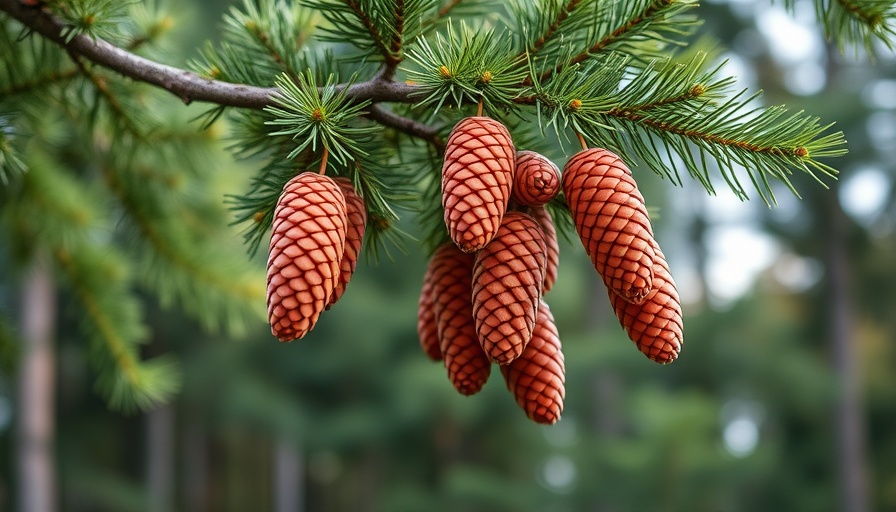
Why Norway Spruce Trees Are Ideal for Your Landscape
The Norway spruce is not only an enchanting evergreen; it also boasts practical benefits that make it a great choice for various landscaping projects. With their conical shape and impressive height, these trees serve as natural privacy screens, windbreakers, and stunning focal points in gardens. Their needles can provide a rich, fresh scent, adding sensory pleasure to outdoor spaces.
Understanding Norway Spruce Characteristics
Norway spruce (Picea abies) is a robust and adaptable tree, typically thriving in USDA Hardiness Zones 2 to 7. The trees can reach up to 100 feet in height in their native habitats; however, in landscaped areas, they often maintain a more manageable height of around 60 feet. Their growth is rapid during adolescence, displaying a strong branch structure that matures into that sought-after droop as it ages. The unique features of this evergreen, such as its four-sided needles and pendulous cones, are what make it both distinctive and desirable for gardeners.
Essential Gardening Tips for Norway Spruce Care
Caring for a Norway spruce encompasses a few fundamental practices. Firstly, ensure proper soil conditions. Norway spruces thrive best in loamy, well-draining soils with a pH of 5.5 to 7.0. They prefer full sun to partial shade and need sufficient watering, especially during their first few years of growth. To enhance their growth, it's recommended to apply organic fertilizers during the spring months and mulch to assist with moisture retention and weed control.
Diverse Cultivars to Explore for Your Garden
Norway spruce offers several cultivars, each bringing something unique to various landscaping designs. For instance, dwarf varieties such as 'Nidiformis' or 'Little Gem' are perfect for rock gardens and smaller spaces, while the 'Weeping' variety, with its gently cascading branches, can add a dramatic element to your garden design. The selection of the right cultivar can catalyze creativity in your landscaping idea, aligning with your aesthetic vision and space requirements.
Common Pests and Disease Management
While they are generally hardy trees, Norway spruces can be susceptible to pests and diseases such as spidermites, aphids, and root rot. Regular inspection and maintenance play key roles in their health. Implementing preventative measures, like ensuring adequate air circulation and watering at the base, can help keep your trees vibrant and thriving. In case of an infestation, consider organic pesticide options for a sustainable approach to pest management.
Creating the Perfect Environment for Growth
The environment in which your Norway spruce grows is critical for its development. Consider laying out your landscape to optimize sunlight exposure and wind protection. Utilizing companion planting techniques, where you group trees with beneficial plants, can foster a more diverse and resilient ecosystem in your garden. Moreover, integrating features like garden seating or water features can enhance not only the aesthetics but also the habitat's functionality.
Conclusion: Lift Your Landscape with Norway Spruce
By adding a Norway spruce to your landscape, you are investing in a resilient, charming, and multifunctional tree that embodies beauty and utility. Whether creating a serene backyard retreat or a majestic outdoor setting, this tree is your partner in achieving breathtaking results.
 Add Row
Add Row  Add
Add 




Write A Comment